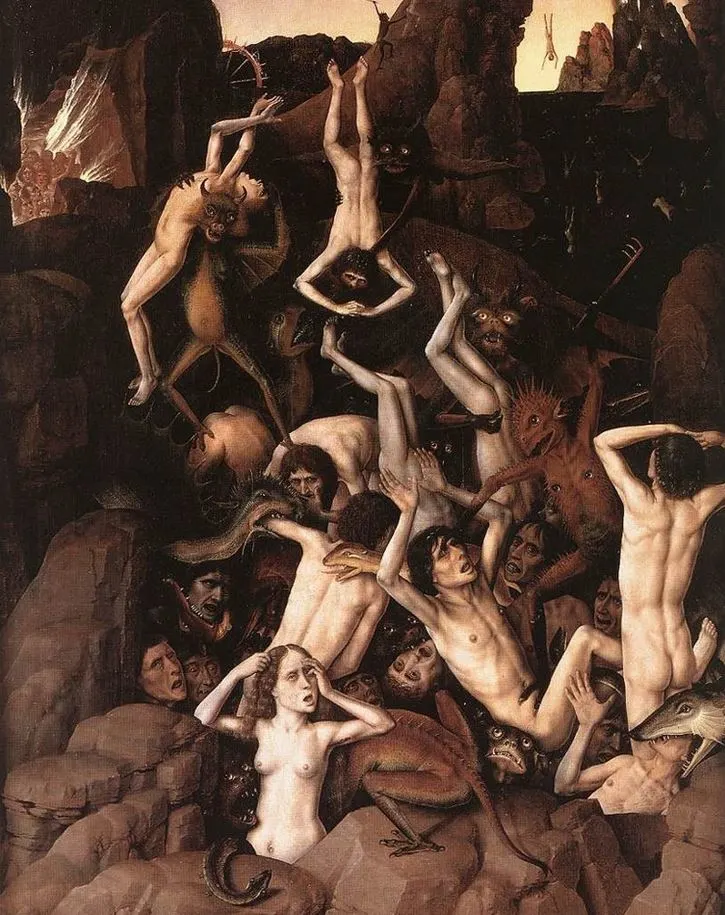This Early Netherlandish Painter was born in the Dutch city of Haarlem but spent most of his career in Leuven in modern-day Belgium.
Dieric Bouts (1415-1475) became the leading artist in this city just east of Brussels and earned some prestigious commissions.
Most of his works are either small devotional paintings, portraits, or large religious works depicting Biblical scenes.
Despite being classified as one of the most renowned and innovative painters of the Northern Renaissance in the 15th century, only 2 paintings are positively attributed to him.
Regardless of this notion, many other works were likely done by him as art historians base the attribution on stylistic elements.
In this article, you’ll discover some of the most famous paintings by Dieric Bouts, a remarkable artist who was influenced by the paintings of Rogier van der Weyden and Jan van Eyck.
1. Altarpiece of the Holy Sacrament
- Date created: 1464-1468
- Dimensions: 88 × 71 centimeters (35 x 28 inches)
- Location: St. Peter’s Church, Leuven, Belgium
The Altarpiece of the Holy Sacrament is a triptych painting by Dieric Bouts that features a central panel and two side panels with 2 scenes each. The central panel is a remarkable work of art that depicts the popular Last Supper scene.
This work features one of the first examples of linear perspective in northern Europe, one of the techniques that make Bouts such an influential artist in this part of Europe. The side panels feature various Biblical scenes and the entire painting hangs in the church it was originally commissioned for today.
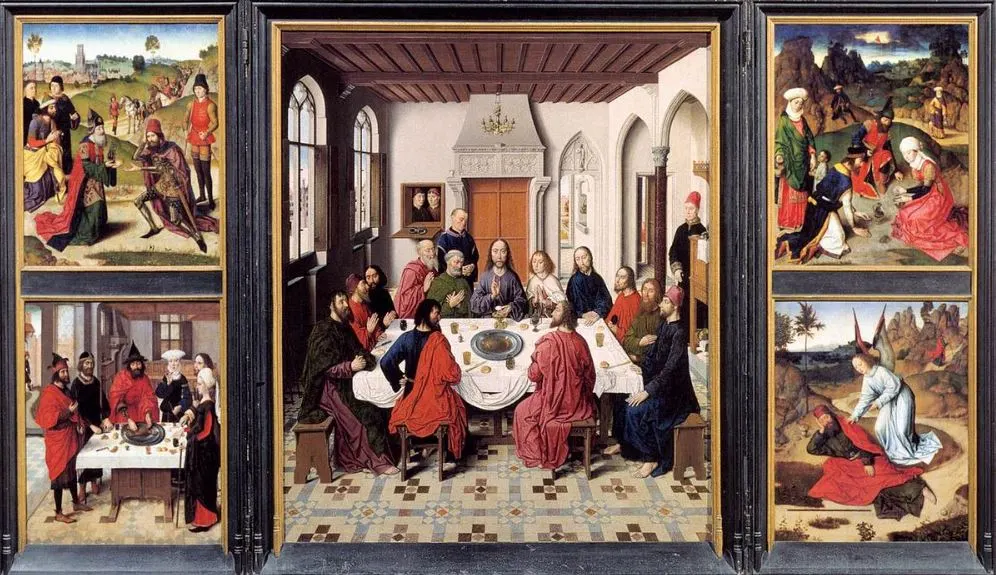
2. The Martyrdom of St. Erasmus
- Date created: 1458
- Dimensions: 34 x 148 centimeters (13.3 x 58.2 inches)
- Location: St. Peter’s Church, Leuven, Belgium
The Martyrdom of St. Erasmus is one of several rather gruesome paintings by Dieric Bouts. As the title suggests, the central panel depicts the execution of Saint Erasmus, a Christian saint, and martyr who died during the final persecution of Christians by the Romans in the early 4th century.

Putting this man to death proved to be difficult for the Romans as they made several attempts. He even escaped prison and was eventually disemboweled. The side panels feature two other important men, Church Father Jerome on the left and Bernard of Clairvaux, the founder of the Cistercian Order, on the right.
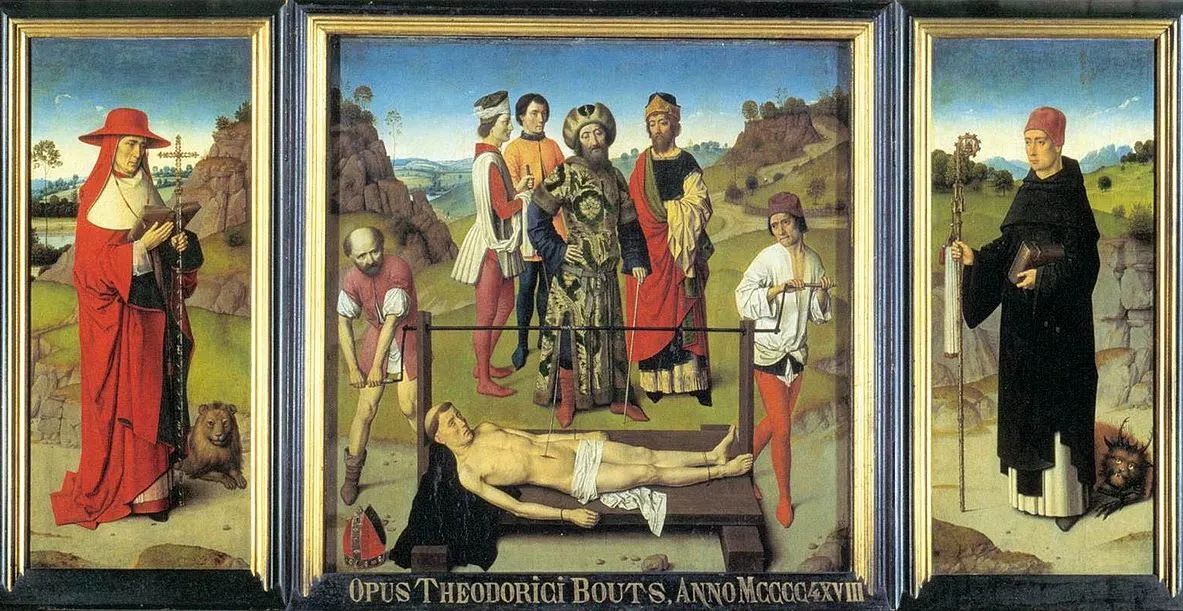
3. The Virgin and Child
- Date created: 1465
- Dimensions: 27.6 x 37.1 centimeters (10.8 x 14.6 inches)
- Location: National Gallery, London, United Kingdom
The Virgin and Child is the title of one of several small devotional paintings that Bouts completed during his lifetime. These types of Madonna paintings were in high demand in the 15th century because they could easily be carried along.
The Virgin glances lovingly at her infant son while she offers him her breast. A landscape can be seen out the window as the mother and her son Jesus Christ are placed inside a typical 15th-century room with beautiful decorations on the wall.

4. Lamentation of Christ
- Date created: 1460s
- Dimensions: 69 x 49 centimeters (27.1 x 19.2 inches)
- Location: Louvre Museum, Paris, France
The Lamentation of Christ is the title of another painting by Bouts that depicts a popular Biblical scene from the passion of Christ. Here we can see several people who mourn over the dead body of Jesus Christ, including the Virgin Mary who holds him.
Many artists depicted this scene from the Middle Ages until the Baroque era and Bouts’ version shows the raw emotion of the mourning people. This was the distinctive transition between the Gothic and Renaissance eras that defines 15th-century art.
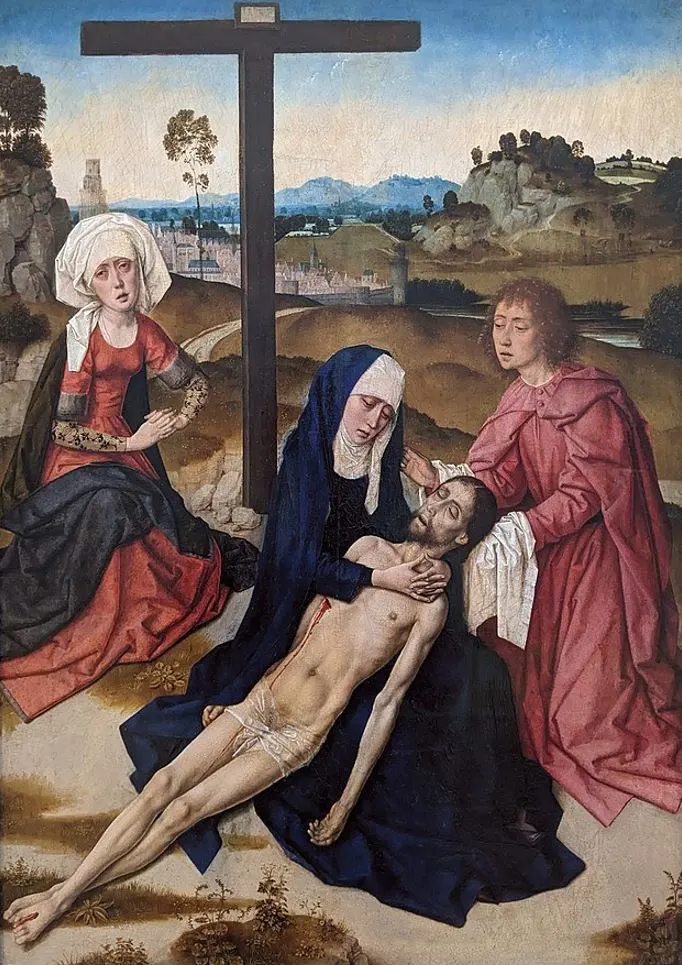
5. Portrait of a Man
- Date created: 1462
- Dimensions: 31.6 x 20.5 centimeters (12.4 x 8 inches)
- Location: National Gallery, London, United Kingdom
Portrait of a Man is the title of a small portrait by Bouts that depicts a man who appears to be in a similar room as the Virgin and her infant Jesus in the painting discussed earlier. The man gazes out of the canvas as we can clearly see a church in the landscape outside of the window.
Even though the true identity of the sitter remains a mystery, it’s possible that this painting depicts a man named Jan van Winckele, an important citizen of the city of Leuven where Bouts lived and worked during the final decades of his life. He was also a friend of the artist so this might explain the commission.
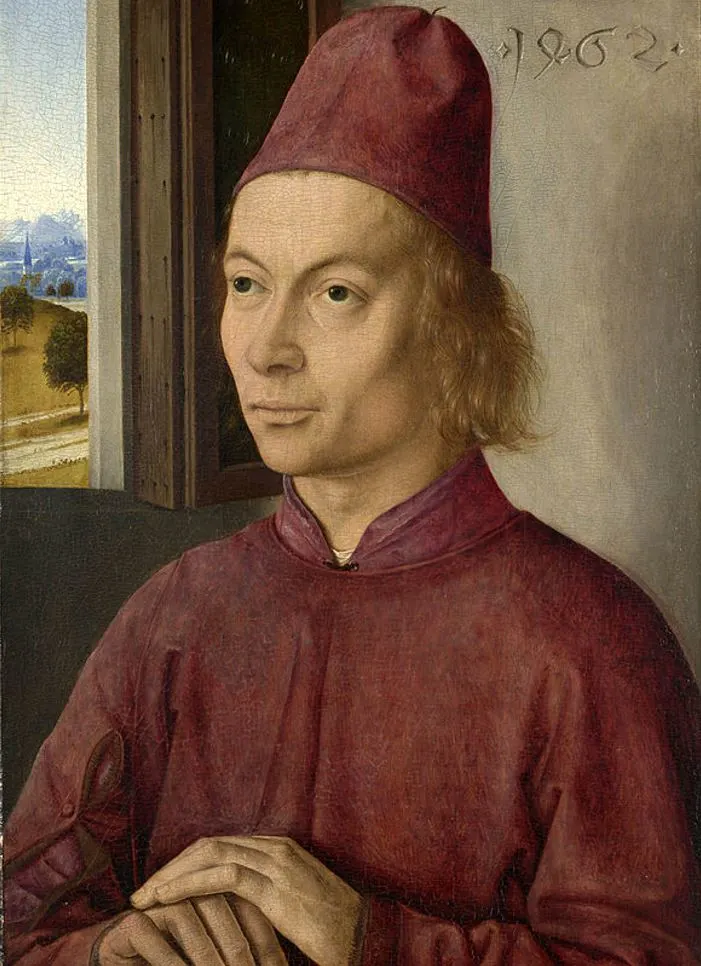
6. The Ascension of the Elect
- Date created: 1450
- Dimensions: 115 cm (45.2 in); width: 69.5 cm (45.2 x 27.3 inches)
- Location: Palais des Beaux-Arts de Lille, Lille, France
The Ascension of the Elect is the title of a painting that depicts the chosen people as they are invited into the Kingdom of Heaven above. The Elect refers to the group of people who are lucky enough to attain eternal life following the so-called “end times.”
Dieric Bouts was inspired by both Genesis 2:10, the Book of Revelation, and an Irish manuscript titled “The Purgatory of St Patrick” which was written in the 14th century. This painting was originally a side panel of a now separated triptych titled “The Last Judgement.”
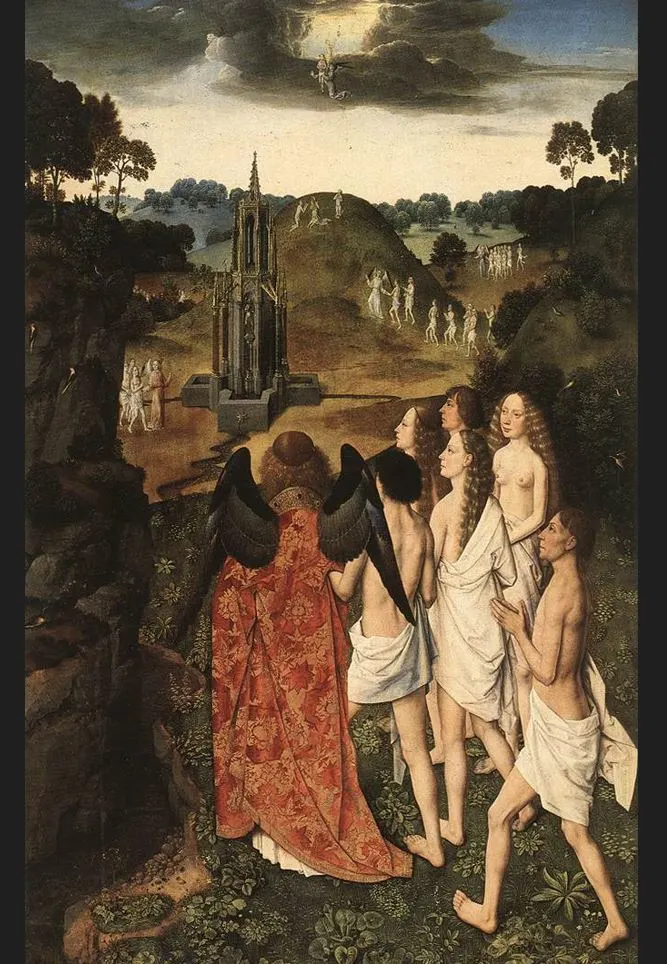
7. Triptych of the Virgin’s Life
- Date created: 1445
- Dimensions: 80 x 217 centimeters (31.4 x 85.4 inches)
- Location: Prado Museum, Madrid, Spain
The Triptych of the Virgin’s Life is a wide painting that depicts 4 different scenes from the life of the Virgin Mary. The general concept of these scenes is the Biblical Redemption and specifically Mary’s role in it according to the Bible.
The four scenes from left to right are the Annunciation, the Visitation, the Adoration of the Angels, and the Adoration of the Magi. The painting itself was inspired by a work titled “Nativity” (the 1450s) by Petrus Christus, and the sculpted portals were inspired by Rogier van der Weyden’s beautiful “Miraflores Altarpiece” (1442-1445).

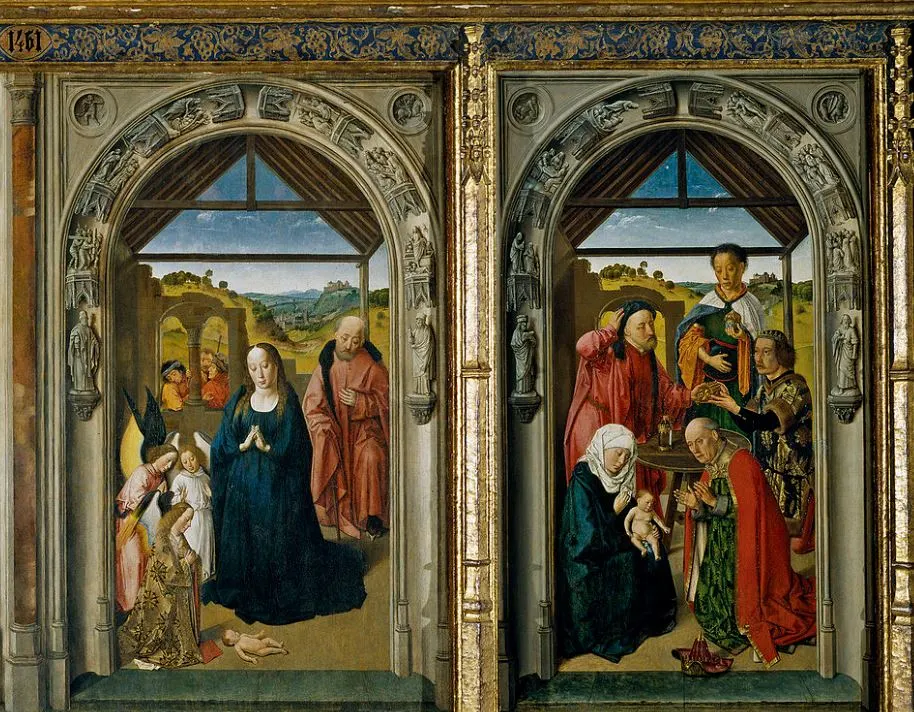
8. Christ in the House of Simon
- Date created: 1460
- Dimensions: 40.5 x 61 centimeters (15.9 x 24 inches)
- Location: Gemäldegalerie, Berlin, Germany
Christ in the House of Simon is a Biblical story that is told in the Gospel of Saint Luke. Jesus visited the house of Simon the Pharisee and a woman started crying and washing his feet the moment he entered, as we can see in this remarkably colorful painting.
Simon instantly started scolding the woman because he knew that she was a sinner. Jesus opposed Simon and told him that her sins were forgiven. The scene takes place in a rather small room with some architectural elements visible outside. The patron of this work is likely the praying man wearing a white robe on the right.
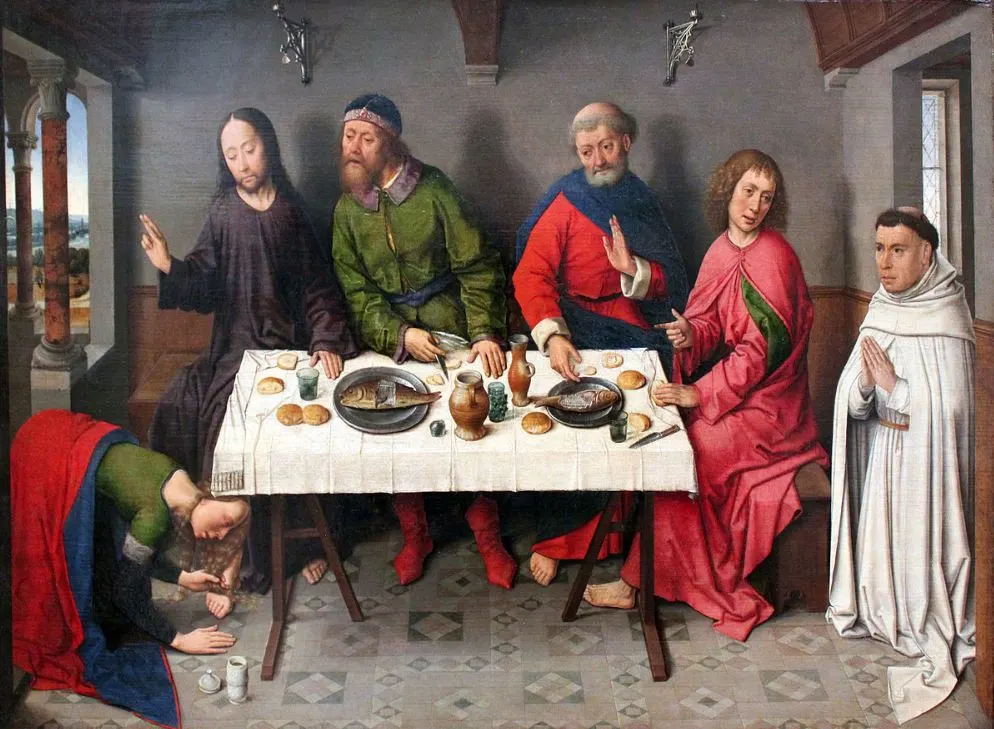
9. The Martyrdom of St. Hippolytus
- Date created: 1468
- Dimensions: 89.2 x 174 centimeters (35.1 x 68.5 inches)
- Location: St. Salvator’s Cathedral, Bruges, Belgium
The Martyrdom of St. Hippolytus is a triptych painting that is also known as the “St Hippolyte Triptych.” Even though it’s certain that Dieric Bouts painted most of this work, it’s likely that he had help from his talented colleague Hugo van der Goes (1440-1482), especially on the left panel.
It’s one of several paintings by Dieric Bouts that depict a grueling scene of a terrible execution taking place. Hippolytus of Rome (170-235) was another poor soul who fell victim to the Roman persecution of Christians in the 3rd century. He met his death after being dragged by horses on all 4 limbs.
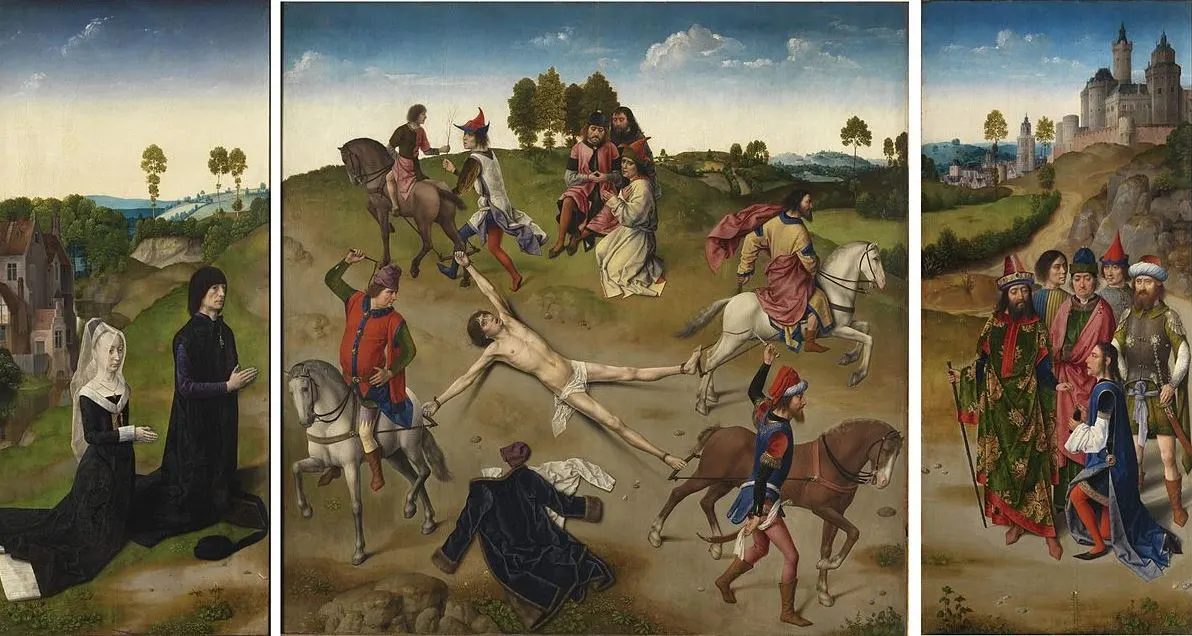
10. The Fall of the Damned
- Date created: 1470
- Dimensions: 115 × 69,5 centimeters (45 × 27.4 inches)
- Location: Palais des Beaux-Arts, Lille, Lille, France
The Fall of the Damned is the other surviving panel of the Last Judgement triptych by Bouts which also featured the Ascension of the Elect. As you can see, this is the opposite side of the coin as the people depicted here will suffer eternal damnation as opposed to a spot in the comfy Kingdom of Heaven.
This triptych was one of several that was commissioned by the city of Leuven and although the central panel has been lost, the side panels remain some of Bouts’ most notable works. It’s easy to understand how people could be frightened by this type of scary artwork.
